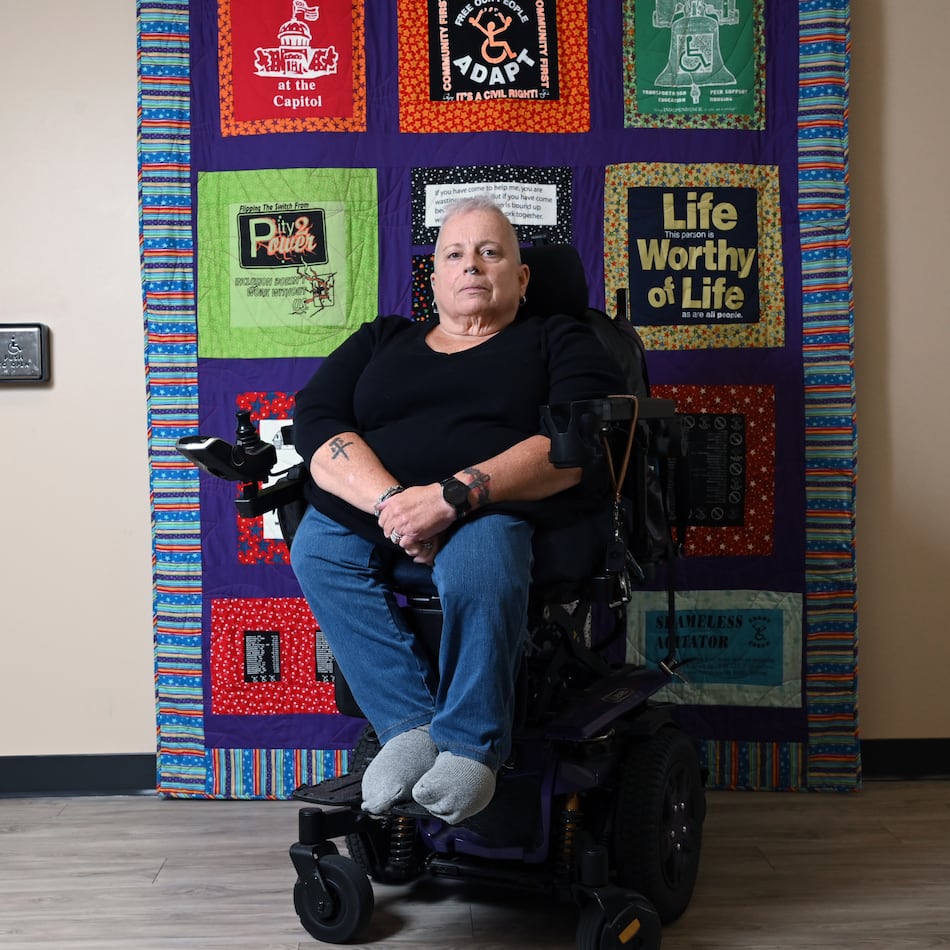Art Harris, a dogged Atlanta-based investigative reporter who worked at The Atlanta Constitution, The Washington Post and CNN, died last Friday. He was 76.
His wife Carol Martin, in an interview with The Atlanta Journal-Constitution, said he died unexpectedly and was unsure of the cause of death.
In the 1980s, Harris covered the Atlanta child murders and the Oliver North scandal. He was on site for the Oklahoma City bombing in 1995, the death of Princess Diana in Paris in 1997 and the Columbine High School shootings in 1999. In 2003, he volunteered to be an embedded CNN reporter with the U.S. Marines in Iraq.
Credit: CNN
Credit: CNN
According to a 1993 Atlanta Journal-Constitution profile, Harris specialized in snuggling up to swindlers and murderers, disarming them with a mixture of cunning and charm that produced portraits of the South more bizarre than anything William Faulkner ever imagined.
“I see myself as a storyteller, pure and simple,” Harris told the AJC in 1993. “I look for things that are potentially good yarns, because if the material is there, you can sculpt it. If you’ve done the work and gathered the anecdotes, sometimes you can write a piece that reads like fiction, and that’s the so-called ‘new journalism.’ That’s the challenge.”
Harris grew up in Atlanta, the son of the wealthy Atlanta industrialist Art L. Harris who ran Mead Paper Company and actress and social activist Helen Alexander. His stepfather was prominent Atlanta architect Cecil Alexander, who designed Atlanta-Fulton County Stadium and headquarters for both Georgia Power and Coca-Cola Co.
After attending the Lovett School in Atlanta and Andover in Massachusetts, Harris graduated from Duke University with degrees in political science and French literature. After a stint in the U.S. Navy, he attended Harvard Business School but dropped out to pursue journalism. He landed at The Atlanta Constitution in 1973, first writing obituaries before moving to features.
His journalistic skills were obvious from the get-go. Frederick Allen, a cub reporter at the time, had been assigned to get photographs of seven children killed when a train hit a school bus. “I flubbed the job,” Allen said. “I called my boss and said I didn’t get the photos. He said, ‘Art Harris got all seven.’ Art had a gift for connecting with people and gaining their confidence.”
After a stretch at The San Francisco Examiner, he joined The Washington Post as an investigative reporter in 1977 under Bob Woodward, half the duo who helped take down Richard Nixon’s presidency. “I was one of Woodward’s trained attack dogs,” Harris said in 1993.
Mike Sager sat across from Harris for a time as a night reporter. “He was known for his graceful writing but I remember his reporting,” he said. “He’d have his phone clamped to his left shoulder and we’d use this six-ply paper. He’d interview and type and type. He had a pile of six-ply paper on his desk literally two feet high. One time I asked him what he was doing and he said, ‘By the time I get finished with someone, I’ll know how many pubic hairs they have.’”
Harris returned to Atlanta as bureau chief for the Post in 1981, covering the Southeast. He notably exposed TV preachers, Jim and Tammy Faye Bakker, who defrauded elderly devotees, and tracked down a prostitute used by televangelist Jimmy Swaggart.
In 1990, Harris moved to burgeoning Atlanta cable TV outfit CNN. He had alopecia areata, an autoimmune disorder that causes baldness, which made him stand out on camera. He’d laugh when people would compare him to Kojak, actor Telly Savalas’ 1970s bald detective character.
Harris was all over CNN during the O.J. Simpson case, breaking dozens of stories, including how Simpson’s lawyers would attack evidence that allegedly linked Simpson to the homicides. He also covered the 1996 Centennial Olympic Park bombing in Atlanta and nabbed the first interview with Richard Jewell, the security guard who first spied the bomb and later was wrongly suspected of planting it.
While at CNN, Harris found a way to get juicy tidbits into his stories by purposely including information he knew would get cut, according to Schuster: “He’d include a detail that would cause our boss to turn all shades of gray. He’d go ballistic.”
But in the following distraction, other juicy tidbits stayed in. “That was Art,” Schuster said.
After CNN let him go in 2004 as part of budget cuts, he worked as a correspondent for ‘Entertainment Tonight” and became a regular on Nancy Grace’s HLN show.
Credit: HLN
Credit: HLN
He had opportunities to move to Los Angeles and New York but preferred to stay in Georgia. “He was very connected and the South,” his brother Alex said. “He is named after his father and very much identified with his family and his legacy.”
In recent years, Harris helped attorneys by creating detailed documentary-style videos for plaintiffs about their injuries. Those videos, shown to defense attorneys would often facilitate a settlement without a court trial.
“It’s the smallest audience I’ve ever had but the most fulfilling job I ever had,” Harris said, according to his wife.
Credit: CONTRIB
Credit: CONTRIB
As a father, Harris would set aside work to help his two sons. When Josh was in college and suffering from alcohol and substance abuse, Art set aside a major work assignment to visit him. “He helped me get into a 12-step program, helped me write my own comeback story and actualize dreams I didn’t think were possible,” said Josh, who is now a stand-up comic and 16 years sober.
Credit: CONTRIBUTED
Credit: CONTRIBUTED
Martin, his wife, said she will remember Harris for his kindness and smarts. “He was a gentleman,” she said. “He’d open the door for me. At a restaurant, he’d stand up when I went to the restroom. He had impeccable manners. And his brain was so sharp, so smart. Someone would say to him they were opening a shoe store and within seconds, he’d come up with five great names for it.”
A public service for Harris is scheduled Tuesday, Sept. 17 at 2 p.m. at the Temple at 1589 Peachtree St NE., Atlanta.
He is survived by his second wife Carol Martin and two sons from his first marriage Josh and Adam.
About the Author
Keep Reading
The Latest
Featured








